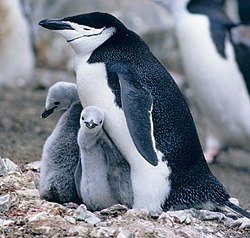Taxonomy
Mitochondrial and nuclear DNA evidence suggests the genus split from other penguins around 38 million years ago, about 2 million years after the ancestors of the genus Aptenodytes . In turn, the Adelie penguins split off from the other members of the genus around 19 million years ago. [3]
- Extant species
Genus Pygoscelis – Wagler, 1832 – three species| Common name | Scientific name and subspecies | Range | Size and ecology | IUCN status and estimated population |
|---|
| Adélie penguin  | Pygoscelis adeliae
(Hombron & Jacquinot, 1841) | Antarctica, Bouvet Island
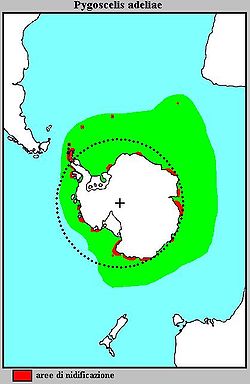 | Size: 70–73 cm (28–29 in) in length and a weight of 3.8 to 8.2 kg (8.4 to 18.1 lb).
Habitat:
Diet: | LC
|
|---|
| Chinstrap penguin 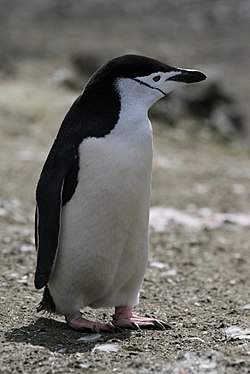 | Pygoscelis antarcticus
(Forster, 1781) | Antarctica, Argentina, Bouvet Island, Chile, the Falkland Islands, the French Southern Territories, and South Georgia and the South Sandwich Islands
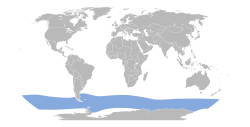 | Size: 68–76 cm (27–30 in) in length and a weight of 3.2–5.3 kg (7.1–11.7 lb)
Habitat:
Diet: | LC
|
|---|
| Gentoo penguin 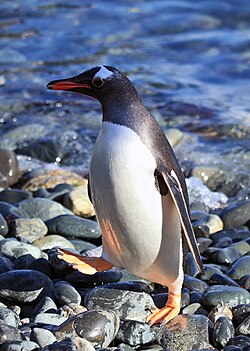 | Pygoscelis papua
(Forster, 1781)
- P. p. taeniata (Peale, 1849)
- P. p. papua (Forster, 1781)
- P. p. ellsworthi Murphy, 1947
- P. p. poncetii Tyler, Bonfitto, Clucas, Reddy & Younger, 2020
| Falkland Islands, South Georgia and the South Sandwich Islands, and Kerguelen Islands
 | Size: length of 70 to 90 cm (28 to 35 in), with weight of 4.5–8.5 kg (9.9–18.7 lb) [6]
Habitat:
Diet: | LC
|
|---|
A 2020 study found that the gentoo penguin may actually comprise a species complex of 4 similar but genetically distinct species: the northern gentoo penguin (P. papua), the southern gentoo penguin (P. ellsworthi), the eastern gentoo penguin (P. taeniata), and the newly-described South Georgia gentoo penguin (P. poncetii). [7] [8] However, in 2021 the International Ornithological Congress recognized these as being subspecies of P. papua. [9]
A study has estimated that there are about 3.79 million pairs of Adélie, 387,000 pairs of gentoo, and 8 million pairs of chinstrap penguins in their particular areas, [10] making up 90% of Antarctic avian biomass. [11]
- Fossil species
The latter two are tentatively assigned to this genus.
This page is based on this
Wikipedia article Text is available under the
CC BY-SA 4.0 license; additional terms may apply.
Images, videos and audio are available under their respective licenses.
